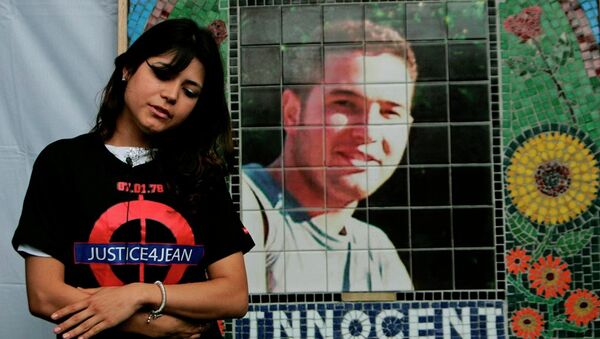The case highlights an incompetent surveillance operation and the killing of an innocent man by London’s Metropolitan Police, who initially were alleged to have attempted to pay his family in the aftermath of the shooting.
Hearing at ECHR as De Menezes family take UK Govt to court for failure to prosecute. pic.twitter.com/9aQ3WGPucu
— Deborah Coles (@DebatINQUEST) June 10, 2015
The killing happened in the aftermath of the 7/7 bombings in London in 2005, when 52 civilians died and over 700 more were injured in the attacks — the United Kingdom's first ever suicide attack.
In the wake of that, a fortnight later, another bombing attempt was foiled and London was on high alert for another terrorist attack. The police and intelligence services set up a huge surveillance operation.
Wrong Man?
On 22 July 2005 the Metropolitan Police were informed that intelligence indicated that Hussain Osman with an address at 21 Scotia Road, London was a suspect. This address was also used by another suspect involved in the failed bombings of 21 July. The CCTV footage of the failed explosions and the photographs of Hussain Osman and of another suspect from their gym records were compared and found to be good likenesses.
Family v UK govt in ECHR over failure to prosecute after shooting of Jean Charles de Menezes — background briefing http://t.co/n67RnTwicn
— INQUEST (@INQUEST_ORG) June 9, 2015
Police set up surveillance on the house. But later than morning, Jean Charles de Menezes, who lived at 17 Scotia Road, left the block of flats through the communal doorway for work. An officer in the surveillance van saw Mr de Menezes, described him and suggested "it would be worth someone else having a look".
De Menezes travelled via bus to Stockwell underground station where he was pursued by several police officers. According to the original inquest: "There are conflicting accounts as to what exactly then happened but it would appear from the accounts given in the IPCC Stockwell One Report that Mr de Menezes went into the third coach of a stationary train and sat down.
"One of the surveillance officers shouted to the SFOs that Mr de Menezes was there. Mr de Menezes then stood up, arms down, and, it would seem from the IPCC Stockwell One Report, that he was pushed back into his seat and pinned down by two police officers. Then, aiming at his head, the two SFOs (Charlie 2 and Charlie 12) shot Mr de Menezes several times in the head and killed him," the inquest heard.
While police injustice/murder dominates the media. Never forget Jean Charles de Menezes! #Innocent #Stockwell pic.twitter.com/BN6IxrYe21
— Batman (@LiloSongz__) November 27, 2014
When it emerged the police had killed an innocent man, there was uproar in London and in Brazil. The Menezes family condemned the shooting and rejected the police apology. It was reported in the media that the Menezes family were offered almost £585,000 compensation by the police. The 2008 inquest in to his death returned an open verdict.
Three Deaths at the Hands of the Police
On Wednesday the European Court of Human Rights hears the case brought by Mr de Menezes’ family, which centers on the fact that there has been no prosecution over his death. Lawyers for the family argue that the assessment used by prosecutors in deciding that no individual should be charged over the 2005 shooting is incompatible with article 2 of the European Convention on Human Rights, which covers the right to life.
The case is similar to the shooting dead by police of Mark Duggan in 2011 when the police were attempting to arrest Duggan on suspicion of planning an attack and that he was in possession of a handgun.
His death provoked outrage and sparked the London riots, which spread to several other cities in one of the worst demonstrations in recent history. Further outrage was provoked when, at his inquest, the jury found that it was a lawful killing, although he had already disposed of his firearm before he was shot by police.
In yet another case, newspaper seller Ian Tomlinson collapsed and died in the City of London on his way home from work, after being struck by a police officer during the 2009 G-20 summit protests. An inquest found that he had been unlawfully killed. A police officer was found not guilty of manslaughter, but was dismissed from the police service for gross misconduct.



